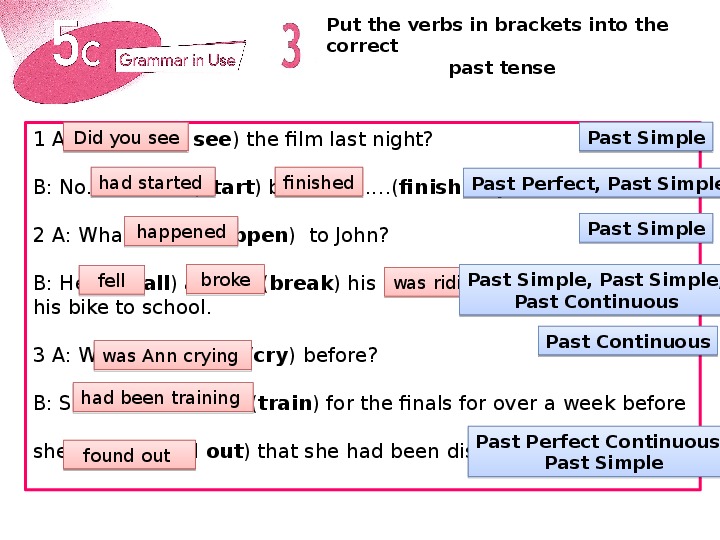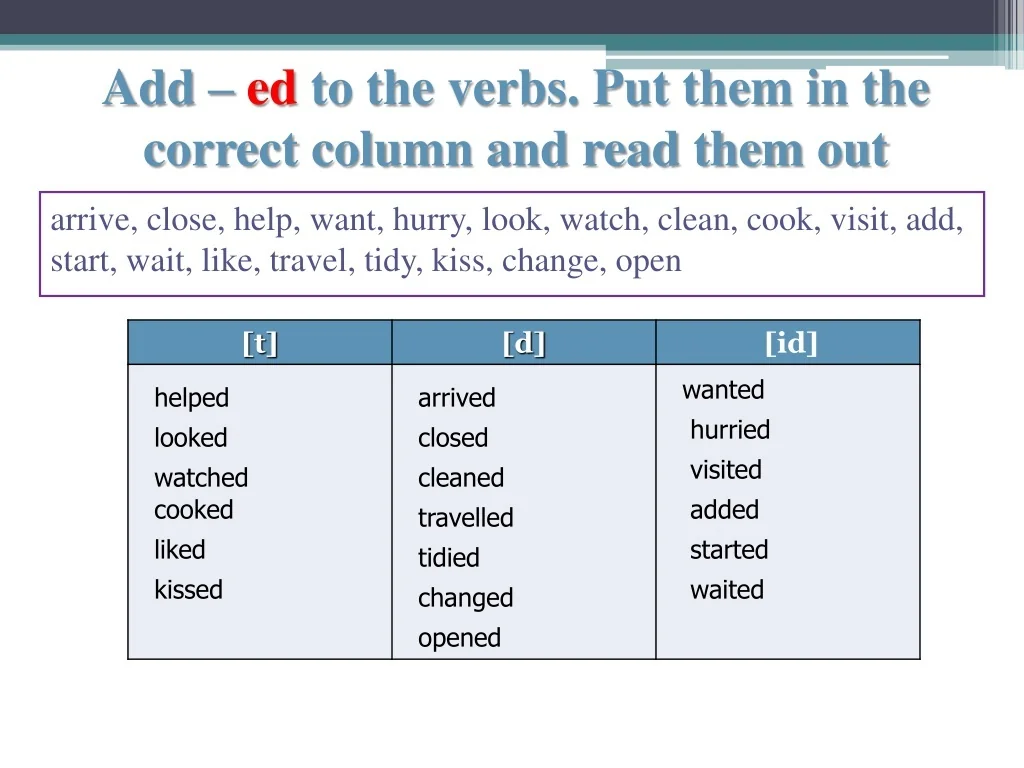Does Pleurisy Go Away on Its Own: How Long Does Pleurisy Last? What to Expect
What is the typical duration of pleurisy and what factors influence its resolution? Learn about the various causes of pleurisy, treatment options, and what to expect during the recovery process.
Understanding Pleurisy: Causes and Symptoms
Pleurisy, also known as pleuritis, is a condition that affects the lining of the lungs, called the pleura. This thin layer of tissue normally lubricates the surfaces between the chest wall and the lungs, allowing them to move smoothly during breathing. When the pleura becomes inflamed, it can cause a sharp, stabbing pain in the chest or shoulder that worsens with breathing, coughing, or movement.
The most common causes of pleurisy include viral infections, bacterial pneumonia, chest injuries, blood clots, and underlying conditions like lupus. Pleurisy can also occur in conjunction with a buildup of fluid in the pleural cavity, known as pleural effusion. Identifying the underlying cause is crucial in determining the appropriate treatment and prognosis.

The Duration of Pleurisy: Factors that Influence Recovery
The length of time it takes for pleurisy to resolve can vary depending on several factors, including the underlying cause, the timing of diagnosis, and the treatment approach. In general, pleurisy caused by viral infections or airway inflammation, such as bronchitis, can often resolve on its own within 1-2 weeks with the help of pain medication and rest.
However, pleurisy associated with bacterial infections, pneumonia, or other underlying medical conditions may require a longer recovery period, often taking up to a month or more to fully resolve. In these cases, a healthcare provider may recommend a course of antibiotics, drainage of any pleural effusion, or other targeted treatments to address the underlying issue.
Pleurisy Caused by Specific Conditions
Bacterial Infections and Pneumonia
Pleurisy that arises from a bacterial infection or pneumonia typically responds well to a course of antibiotics. If pleural effusion is present, the healthcare provider may need to drain the fluid to improve the patient’s condition. The resolution of symptoms in these cases can take up to a month or longer.

Blood Clots (Embolisms)
Pleurisy caused by blood clots, or embolisms, is treated with blood-thinning medications. Once the clot is dissolved, the pleurisy should heal quickly. However, untreated embolisms can be dangerous and potentially life-threatening, so it is crucial to seek medical attention promptly.
Lung Tumors
For pleurisy associated with lung tumors, the healthcare team may first address the underlying cancer with chemotherapy or radiation therapy before the pleurisy can fully resolve. Draining any pleural effusion may be necessary in the meantime to maintain lung function.
Chest Wounds and Trauma
Pleurisy caused by chest wounds, rib fractures, or other blunt trauma to the rib cage typically resolves once the underlying injuries have healed. Pleural effusion may occur as a result of these injuries, and drainage may be required before the pleurisy symptoms subside.
Lupus
In cases of pleurisy related to the autoimmune condition lupus, healthcare providers may prescribe nonsteroidal anti-inflammatory drugs (NSAIDs) or other medications to suppress the immune system and control the inflammation in the pleura until the pleurisy resolves.

Managing Pleurisy: Supportive Care and Treatment
Regardless of the underlying cause, the most important step in managing pleurisy is to get proper medical care. While some cases of pleurisy may resolve on their own with rest and pain management, others may require targeted treatment to address the underlying condition.
In addition to any prescribed treatments, there are several supportive measures that can help alleviate the symptoms of pleurisy, such as:
- Resting as much as possible to allow the pleura to heal
- Taking over-the-counter pain medications like ibuprofen to reduce inflammation and discomfort
- Trying a codeine-based cough syrup to suppress coughing and improve sleep
- Practicing deep breathing exercises to help clear mucus and improve lung function
- Lying on the side that is most painful to compress the inflamed pleura
Seeking Medical Attention for Pleurisy
If you experience a sudden, stabbing pain in your chest or lungs that worsens with breathing, coughing, or movement, it is essential to seek medical attention right away. Pleurisy can be a sign of a more serious underlying condition, and early diagnosis and treatment are crucial to prevent potential complications.

Your healthcare provider will perform a physical examination, review your medical history, and may order diagnostic tests, such as imaging scans or blood tests, to determine the underlying cause of your pleurisy. Based on the findings, they will develop an appropriate treatment plan to address your specific condition and help alleviate your symptoms.
Conclusion
The duration of pleurisy can vary greatly depending on the underlying cause and the timeliness of diagnosis and treatment. While some cases of pleurisy may resolve on their own within 1-2 weeks, others may require more extensive medical intervention and a longer recovery period. By seeking prompt medical attention and following the recommended treatment plan, individuals with pleurisy can improve their chances of a swift and complete recovery.
How Long Does Pleurisy Last? What to Expect
Pleurisy, or pleuritis, is a condition that affects the lining of your lungs. Usually, this lining lubricates the surfaces between your chest wall and your lungs. When you have pleurisy, this lining becomes inflamed.
Pleurisy can occur with pleural effusion, which is when fluid builds up in the pleural cavity. The pleural cavity includes the thin layer of tissue covering the lungs and lining the interior of your chest cavity.
Pleurisy may cause a stabbing chest or shoulder pain when you breathe. This pain may be worse when you cough, sneeze, or move.
How long it lasts may depend on:
- the underlying cause
- time of diagnosis
- the method used to treat your pleurisy
Sometimes pleurisy resolves without any treatment at all, and sometimes complications develop even with treatment. Keep reading to find out what to expect if you have pleurisy.
Pleurisy can occur as a complication of a viral infection or bronchitis.
Other common causes include:
- other viral infections that spread to the lung’s lining
- advanced bacterial pneumonia
- chest wounds, injuries, rib fractures, or lung trauma
- blood clots
- recovery from heart surgery
- sickle cell anemia
- lung tumors
- chronic conditions such as lupus
Pleurisy can also occur if you have pleural effusion. Other health conditions may cause pleural effusion. These may include:
- conditions affecting the heart, such as congestive heart failure, pulmonary embolism, or complications from open heart surgery
- kidney disease
- liver cirrhosis
- pneumonia
- COVID-19
- lung or breast cancer
How long pleurisy lasts can depend on what’s causing your condition and whether you’re diagnosed early.
There’s no definitive way to tell how long your pleurisy will last unless you know what’s causing it.
Pleurisy that’s caused by airway inflammation, including bronchitis, bronchiolitis, or pathogens like viruses, can resolve on its own, without treatment. Pain medication and rest can help relieve symptoms of pleurisy while the lining of your lungs heals. This can take up to two weeks in most cases.
Pain medication and rest can help relieve symptoms of pleurisy while the lining of your lungs heals. This can take up to two weeks in most cases.
It’s important to get medical care if you think you have pleurisy. Untreated pleurisy can lead to serious complications if you’re not supervised by a medical professional.
Pleural effusion tends to occur with pleurisy. If you experience pleural effusion (water on the lung), it may require surgical drainage to improve your condition.
Bacterial infection or pneumonia
Pleurisy that’s caused by a bacterial infection or pneumonia typically resolves following a course of antibiotics.
If you develop pleurisy and pleural effusion, it can take up to a month or even longer for symptoms to resolve. A healthcare professional may recommend drainage.
Blood clots
Blood clots, or embolisms, that cause pleurisy are treated with a course of blood-thinning medication. After the embolism dissolves, your pleurisy should heal quickly.
Untreated embolisms may be dangerous and potentially life threatening. Pleurisy may continue until the embolism is addressed. Some people need to continue this kind of medication indefinitely to prevent more embolisms.
Lung tumors
Specialists may treat lung tumors with chemotherapy or radiation before pleurisy resolves. You may need to have the fluid in your lungs drained in the meantime to keep your lungs functioning the way they need to. Your pleurisy symptoms may come back after drainage.
Chest wounds
Pleurisy that’s caused by chest wounds or blunt trauma to your rib cage typically goes away once your injuries heal. Sometimes a pleural effusion happens as a result of these injuries. If that’s the case, this fluid may need to be drained before your pleurisy symptoms go away.
Lupus
Healthcare professionals sometimes recommend nonsteroidal anti-inflammatory drugs (NSAIDs) to treat pleurisy that’s caused by lupus.
You may need other medications that suppress the immune system to control the inflammation of your lung’s lining until pleurisy heals.
If you have pleurisy, the best thing you can do for your body is to rest. A doctor may tell you to rest at home while you wait for your pleurisy to resolve.
With a doctor’s prescription, you can try a codeine-based cough syrup to reduce coughing and help you sleep while your pleurisy heals.
Other ways to help you heal faster or more comfortably can include:
- breathing deeply to clear out the mucus that might otherwise become trapped in your lungs
- taking over-the-counter medication such as ibuprofen (Advil) to suppress pain and inflammation
- lying on the side of your body that’s most painful can compress your lung lining and make you feel more comfortable
If you have a stabbing pain in your lungs when you breathe or cough, seek medical care right away.
Pleurisy should be identified and treated as soon as possible. Since the underlying cause of pleurisy can be quite serious, you need to understand why you’re having these symptoms. While a sharp pain or dull ache settled around your lungs can indicate pleurisy, it can also be a symptom of other serious health conditions.
While a sharp pain or dull ache settled around your lungs can indicate pleurisy, it can also be a symptom of other serious health conditions.
Schedule an appointment with a doctor as soon as you can if you experience any of the following:
- chest pain that worsens when you cough or sneeze
- shortness of breath that leaves you dizzy or disoriented
- a feeling of pressure on your ribcage or lungs
- sharp pain on only one side of your chest
If the condition that causes pleurisy is found and treated, many people with pleurisy can expect a full recovery.
Left untreated, or if you have a chronic condition that causes pleurisy, your symptoms may go away and come back several times. The best course of action is to see a medical professional who can diagnose your pleurisy and give you a recommendation based on your health history.
Pleurisy causes the lining of your lungs to become inflamed. This can cause pain when you breathe.
Pleurisy typically occurs due to an underlying condition, whether a viral or bacterial infection or another health condition, such as blood clots or lupus.
Treatment involves relieving symptoms while treating the underlying condition. Sometimes procedures may help drain excess fluid or air from the lungs.
How Long Does Pleurisy Last? What to Expect
Pleurisy, or pleuritis, is a condition that affects the lining of your lungs. Usually, this lining lubricates the surfaces between your chest wall and your lungs. When you have pleurisy, this lining becomes inflamed.
Pleurisy can occur with pleural effusion, which is when fluid builds up in the pleural cavity. The pleural cavity includes the thin layer of tissue covering the lungs and lining the interior of your chest cavity.
Pleurisy may cause a stabbing chest or shoulder pain when you breathe. This pain may be worse when you cough, sneeze, or move.
How long it lasts may depend on:
- the underlying cause
- time of diagnosis
- the method used to treat your pleurisy
Sometimes pleurisy resolves without any treatment at all, and sometimes complications develop even with treatment. Keep reading to find out what to expect if you have pleurisy.
Keep reading to find out what to expect if you have pleurisy.
Pleurisy can occur as a complication of a viral infection or bronchitis.
Other common causes include:
- other viral infections that spread to the lung’s lining
- advanced bacterial pneumonia
- chest wounds, injuries, rib fractures, or lung trauma
- blood clots
- recovery from heart surgery
- sickle cell anemia
- lung tumors
- chronic conditions such as lupus
Pleurisy can also occur if you have pleural effusion. Other health conditions may cause pleural effusion. These may include:
- conditions affecting the heart, such as congestive heart failure, pulmonary embolism, or complications from open heart surgery
- kidney disease
- liver cirrhosis
- pneumonia
- COVID-19
- lung or breast cancer
How long pleurisy lasts can depend on what’s causing your condition and whether you’re diagnosed early.
There’s no definitive way to tell how long your pleurisy will last unless you know what’s causing it.
Pleurisy that’s caused by airway inflammation, including bronchitis, bronchiolitis, or pathogens like viruses, can resolve on its own, without treatment. Pain medication and rest can help relieve symptoms of pleurisy while the lining of your lungs heals. This can take up to two weeks in most cases.
It’s important to get medical care if you think you have pleurisy. Untreated pleurisy can lead to serious complications if you’re not supervised by a medical professional.
Pleural effusion tends to occur with pleurisy. If you experience pleural effusion (water on the lung), it may require surgical drainage to improve your condition.
Bacterial infection or pneumonia
Pleurisy that’s caused by a bacterial infection or pneumonia typically resolves following a course of antibiotics.
If you develop pleurisy and pleural effusion, it can take up to a month or even longer for symptoms to resolve. A healthcare professional may recommend drainage.
Blood clots
Blood clots, or embolisms, that cause pleurisy are treated with a course of blood-thinning medication. After the embolism dissolves, your pleurisy should heal quickly.
After the embolism dissolves, your pleurisy should heal quickly.
Untreated embolisms may be dangerous and potentially life threatening. Pleurisy may continue until the embolism is addressed. Some people need to continue this kind of medication indefinitely to prevent more embolisms.
Lung tumors
Specialists may treat lung tumors with chemotherapy or radiation before pleurisy resolves. You may need to have the fluid in your lungs drained in the meantime to keep your lungs functioning the way they need to. Your pleurisy symptoms may come back after drainage.
Chest wounds
Pleurisy that’s caused by chest wounds or blunt trauma to your rib cage typically goes away once your injuries heal. Sometimes a pleural effusion happens as a result of these injuries. If that’s the case, this fluid may need to be drained before your pleurisy symptoms go away.
Lupus
Healthcare professionals sometimes recommend nonsteroidal anti-inflammatory drugs (NSAIDs) to treat pleurisy that’s caused by lupus.
You may need other medications that suppress the immune system to control the inflammation of your lung’s lining until pleurisy heals.
If you have pleurisy, the best thing you can do for your body is to rest. A doctor may tell you to rest at home while you wait for your pleurisy to resolve.
With a doctor’s prescription, you can try a codeine-based cough syrup to reduce coughing and help you sleep while your pleurisy heals.
Other ways to help you heal faster or more comfortably can include:
- breathing deeply to clear out the mucus that might otherwise become trapped in your lungs
- taking over-the-counter medication such as ibuprofen (Advil) to suppress pain and inflammation
- lying on the side of your body that’s most painful can compress your lung lining and make you feel more comfortable
If you have a stabbing pain in your lungs when you breathe or cough, seek medical care right away.
Pleurisy should be identified and treated as soon as possible. Since the underlying cause of pleurisy can be quite serious, you need to understand why you’re having these symptoms. While a sharp pain or dull ache settled around your lungs can indicate pleurisy, it can also be a symptom of other serious health conditions.
Since the underlying cause of pleurisy can be quite serious, you need to understand why you’re having these symptoms. While a sharp pain or dull ache settled around your lungs can indicate pleurisy, it can also be a symptom of other serious health conditions.
Schedule an appointment with a doctor as soon as you can if you experience any of the following:
- chest pain that worsens when you cough or sneeze
- shortness of breath that leaves you dizzy or disoriented
- a feeling of pressure on your ribcage or lungs
- sharp pain on only one side of your chest
If the condition that causes pleurisy is found and treated, many people with pleurisy can expect a full recovery.
Left untreated, or if you have a chronic condition that causes pleurisy, your symptoms may go away and come back several times. The best course of action is to see a medical professional who can diagnose your pleurisy and give you a recommendation based on your health history.
Pleurisy causes the lining of your lungs to become inflamed. This can cause pain when you breathe.
Pleurisy typically occurs due to an underlying condition, whether a viral or bacterial infection or another health condition, such as blood clots or lupus.
Treatment involves relieving symptoms while treating the underlying condition. Sometimes procedures may help drain excess fluid or air from the lungs.
Where does pleurisy come from and what to do with it
February 1, 2021
Likbez
Health
Chest pain can be deadly.
What is pleurisy
Pleurisy is an inflammation of the pleura. This is the name of the thin tissue that separates the lungs and the inner surface of the chest.
This fabric is soft, slippery, almost satin. That is why, when the lungs expand and contract during breathing, we do not feel friction. The surfaces of the chest and lungs slide freely over each other without causing discomfort.
But sometimes the pleura swells and becomes inflamed. Smooth sliding does not occur: two surfaces rub against each other, like two pieces of sandpaper.
What are the symptoms of pleurisy
Signs of inflammation are hard to miss. These are:
- Sharp stabbing pain with each inhalation and exhalation.
- Pain aggravated by coughing, sneezing, turning and bending the body.
- Shortness of breath. It occurs due to the fact that a sick person breathes superficially, shallowly, thus trying to reduce discomfort.
Sometimes, but not necessarily, additional symptoms appear: pain radiates to the shoulder or back, fever, and coughing.
Why pleurisy is dangerous and when to call a doctor
What feels like inflammation of the pleura can actually be a much more serious disease. Similar manifestations are felt by malfunctions in the work of the heart, for example, a developing heart attack, or deadly problems with blood flow in the lungs.
So, if you feel unexplained severe pain in your chest when inhaling and exhaling, consult a therapist as soon as possible. Or call an ambulance if other threatening symptoms appear against this background:
- chest pain can be described as burning or crushing and radiates to the neck, shoulder, back, jaw, or arms;
- severe incessant pain lingering for five minutes or more;
- there is a feeling of pressure, fullness, tightness in the chest;
- you feel nauseous to the point of vomiting;
- pain is aggravated by physical activity, even minor;
- cold sweat breaks out on skin;
- dizzy, there is weakness, clouding of consciousness.
Where does pleurisy come from
Many factors can provoke inflammation of the pleura:
- A viral infection, such as influenza.
- Bacterial infection – the same pneumonia.
- Fungal infection.
- Autoimmune diseases such as rheumatoid arthritis or systemic lupus erythematosus.

- Injury or fracture of the rib.
- Some hereditary diseases, such as sickle cell anemia.
- Taking certain medications.
- Tuberculosis.
- Lung cancer near the pleura.
- Pulmonary embolism.
Many of the causes are dangerous. Therefore, we repeat again: if you feel chest pain when breathing, be sure to consult a therapist as soon as possible.
How to treat pleurisy
Treatment begins with an accurate diagnosis. Your doctor will ask you about your symptoms, do a physical exam, and most likely give you a referral for research:
- Blood test. You will need to do both a general analysis and a biochemical one. And also, perhaps, to check some specific indicators. Such a test will help to find out if you have an infection – viral or bacterial, or to identify an autoimmune disease.
- X-ray or ultrasound of the chest.
- Computed tomography (CT) of the chest. This study will show the condition of the pleura in detail and will allow you to detect other causes of pain, such as a blood clot in the lung.

- Electrocardiogram (ECG). It is needed to rule out heart problems.
It is not so much the pleurisy itself that is treated, but the disease or condition that caused it. For example, if the cause of inflammation of the pleura is a bacterial infection, the doctor will prescribe antibiotics. With a viral infection, pleurisy resolves on its own. And to relieve pain, your doctor will recommend non-steroidal (such as ibuprofen-based) or steroidal anti-inflammatory drugs.
The result of therapy depends on the severity and neglect of the underlying disease. It is important to detect and start treating the disease that provoked pleurisy as early as possible.
How to relieve pleurisy pain
There are only three recommendations:
- Strictly follow the doctor’s instructions. Take the medicines prescribed by him and do not give them up ahead of time, even if you feel better.
- Get more rest. Try to find a position where it doesn’t hurt too much.
 And even when you feel better, do not rush to physical activity.
And even when you feel better, do not rush to physical activity. - Stop smoking. Smoking irritates the lungs and surrounding tissues, meaning pain and healing can be delayed. If you can’t quit cigarettes on your own, ask your doctor to help you.
Read also 💊😷🚑
- 16 misconceptions about coronavirus that can cost you your nerves and even your life
- The main thing about asthma: how to treat it and when to call an ambulance
- Bronchitis: what to do if the cough does not go away
- What is pulmonary fibrosis and why is it dangerous
- How community-acquired pneumonia differs from hospital-acquired pneumonia and how they are treated
indications for conduction, how they do it, the result after a lung puncture
home
Publications
Handbook of analyzes and manipulations
T
Thoracocentesis
Thoracocentesis – what is it?
The accumulation of fluid in the pleural cavity is characterized by a sharp deterioration in well-being, difficulty in breathing, shortness of breath. This can cause prolonged hypoxia and human death.
This can cause prolonged hypoxia and human death.
To exclude this, it is necessary to perform thoracocentesis (thoracocentesis), which is a puncture of the chest wall and the subsequent evacuation of fluid from the pleural cavity.
This intervention is carried out both for diagnostic and therapeutic purposes.
Carrying out the procedure for diagnostic purposes allows you to clarify the origin of the accumulated fluid. The therapeutic goal is the evacuation of fluid and the introduction of the necessary drug.
The procedure is also applicable in the treatment of cancer, when the neoplasm is localized in the respiratory tract or neighboring tissues.
After the liquid is removed, the person’s breathing is restored, and, accordingly, the quality of his life improves.
There is no special preparation for the procedure. It is carried out using local anesthesia, which is impregnated with the site of the upcoming puncture.
Causes of pathology
Medical practice shows that the causes of the formation of pleurisy in the pleural cavity are quite often certain forms of oncological pathologies, more often lung cancer.
Normally functioning pleural sheets secrete about 100 ml of fluid every hour, which can help the free movement of the lung during breathing. Lymphatic vessels penetrating the pleura absorb fluid. Therefore, radiography does not detect exudate in the pleural cavity in a healthy person.
If the balance between the rate of release of pleural fluid and its absorption is disturbed, then this leads to the formation of pleurisy. Often they are signals of the spread of primary oncology of the lung to the pleural sheets or, if we are talking about cancer of other organs, signals of penetration of metastases into the pleura.
The development of a cancerous tumor promotes the circulation of detached atypical cells in the bloodstream, some of which are attached to the pleural sheets.
Metastases in the pleura provoke obstruction of the lymphatic vessels, as a result of which the absorption of fluid from the chest cavity is disturbed.
The tumor of the vessels of the lymphatic system also introduces an imbalance in the normal transport of fluid through the lymphatic channel. Lymph nodes clogged with atypical cells cease to function as a pump. If the tumor invades the lung parenchyma, fluid is likely to enter the chest cavity due to increased hydrostatic pressure.
Lymph nodes clogged with atypical cells cease to function as a pump. If the tumor invades the lung parenchyma, fluid is likely to enter the chest cavity due to increased hydrostatic pressure.
All of the above can manifest itself simultaneously, and the prevalence of one over the other is also possible. The choice of treatment tactics will depend on this.
Of course, the appearance of pleurisy is not always due to cancer. It can occur without damage to the sheets of the pleura, for example, with benign ovarian tumors. In the vast majority of cases, special treatment is not required, pleurisy goes away on its own when the ovary, which has been changed by the neoplasm, is removed.
The intensity of fluid accumulation can be different: from several three days to several weeks, a clinically noticeable liter is formed. Why clinically palpable? A smaller volume of accumulated fluid, as a rule, does not bother a person. When the liquid is about a liter, there is a decrease in the volume of the chest cavity. It is impossible for the lungs to fully expand, the heart begins to “squeeze”, since contractions are more difficult for it. Subsequently, there are:
It is impossible for the lungs to fully expand, the heart begins to “squeeze”, since contractions are more difficult for it. Subsequently, there are:
- Insufficiency of completeness of inspiration;
- Heavy palpitations;
- Dry cough;
- Edema of the legs;
- Shortness of breath.
Objectives
Thoracocentesis is performed for diagnostic and therapeutic purposes.
In the first case, the cause of fluid accumulation is determined, in the second, it is evacuated.
Speaking about oncology, we emphasize that the procedure is used to eliminate the consequences of the development of oncological foci in the pleura, mediastinum and bronchi.
As already noted, a significant amount of accumulated fluid makes it difficult to breathe, worsens the general well-being of a person. The procedure allows you to safely pump out up to one and a half liters of liquid per day. This helps to restore normal breathing, improve the quality and life expectancy of the patient.
Readings
There are several indications for the procedure. The most common:
- Accumulation of fluid in the pleural cavity with pleurisy;
- Pathological conditions of the lungs, contributing to the entry of lymph or blood into the pleural cavity;
- Pneumothorax;
- Pleural empyema.
In order to know exactly what exactly has accumulated (liquid or air), an ultrasound examination, CT scan, and radiography are required before the procedure.
Contraindications
There are several contraindications to the procedure:
- Pregnancy;
- Blood incoagulability;
- Intestinal obstruction;
- Inflammation of the abdominal wall.
The attending physician takes responsibility for the appointment of the procedure. His decision is based on observations of the patient and the study of his anamnesis.
Holding
A local anesthetic is used for the procedure. The patient is in a chair with a hand raised from the side of the puncture, wound behind the head.
The patient is in a chair with a hand raised from the side of the puncture, wound behind the head.
First, the skin in the puncture zone is treated with an antiseptic, a local anesthetic is injected.
Then the doctor performs a puncture with a puncture needle.
In order to avoid damage to the intercostal vessels and nerves, the needle is directed along the edge of the underlying rib.
Sipping the plunger of the syringe, which is attached to the needle, is carried out continuously.
If pneumothorax occurs, the appearance of air bubbles in the syringe indicates the success of the procedure.
Often, ultrasound control is used during the procedure.
In the process of drainage of the pleural cavity after a puncture, the skin is incised and a drain is inserted using a thick needle, fixing it on the skin.
Through the drain and evacuate the accumulated liquid.
Complications
Medical practice faces some complications, including:
- Bleeding;
- Pneumothorax;
- Pulmonary edema;
- Hemothorax;
- Injuries of the liver or spleen;
- Vasovagal syncope.




 And even when you feel better, do not rush to physical activity.
And even when you feel better, do not rush to physical activity.